Enterprise risk management
Information chaos and enterprise risk management
Information is critical to every aspect of operation within an organization. From improving decision-making and documenting agreements to enabling communication and facilitating transactions, documents hold a great deal of important and sensitive information. Consequently, any enterprise risk management strategy must involve solutions for managing documents safely and effectively.
Most organizations today, however, faces serious challenges when it comes to storing, securing and using content effectively. Companies are often simply overwhelmed by the volume of documents under their purview. Employees in many businesses find it difficult to locate documents when they need them, spending as much as 30% of their days searching for information1. Thanks to inadequate document control, duplicate documents and multiple versions of files create additional costs and headaches. And breaches, unauthorized access and accidental leaks create significant financial, legal and business risk.
M-Files can help. As a next-generation intelligent information management platform, M-Files improves enterprise risk management capabilities by making documents easier to find and use effectively while minimizing human error, automating critical processes and keeping information secured and controlled.
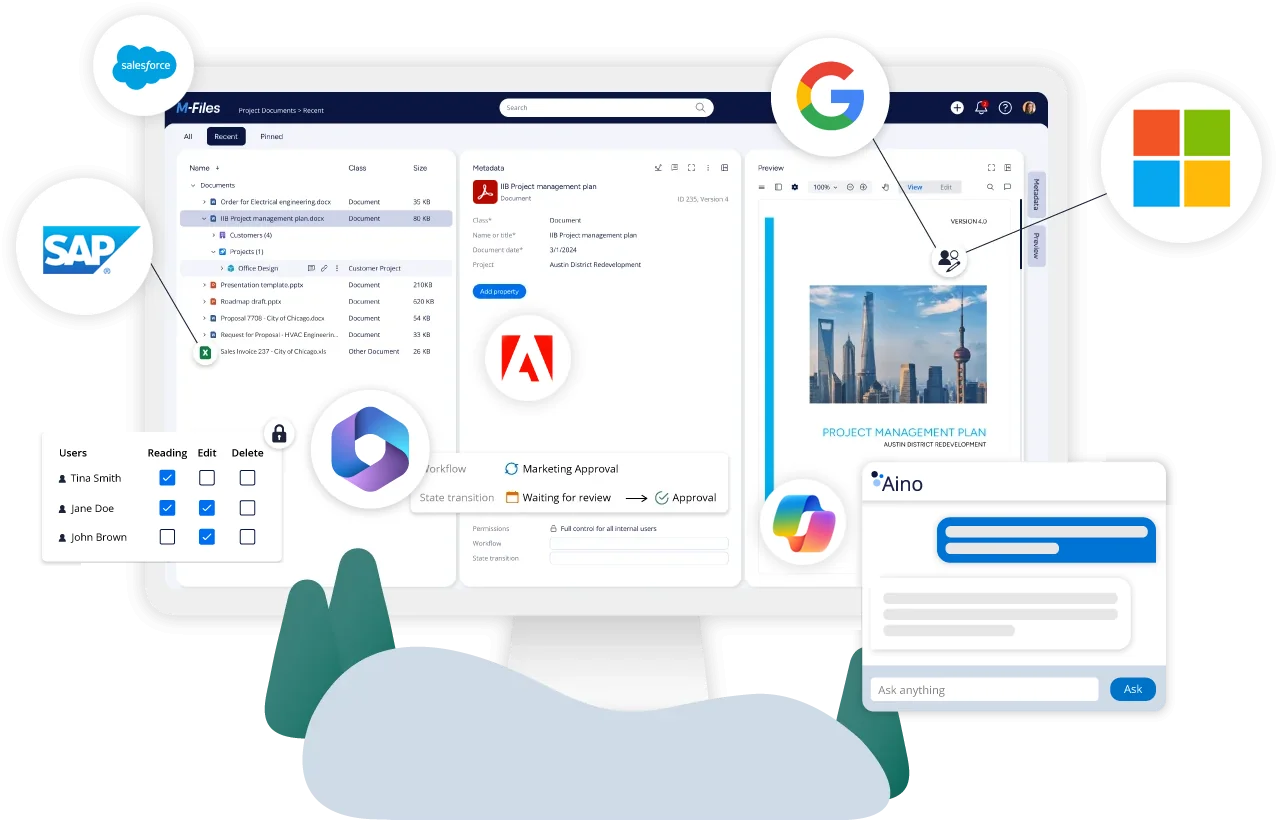
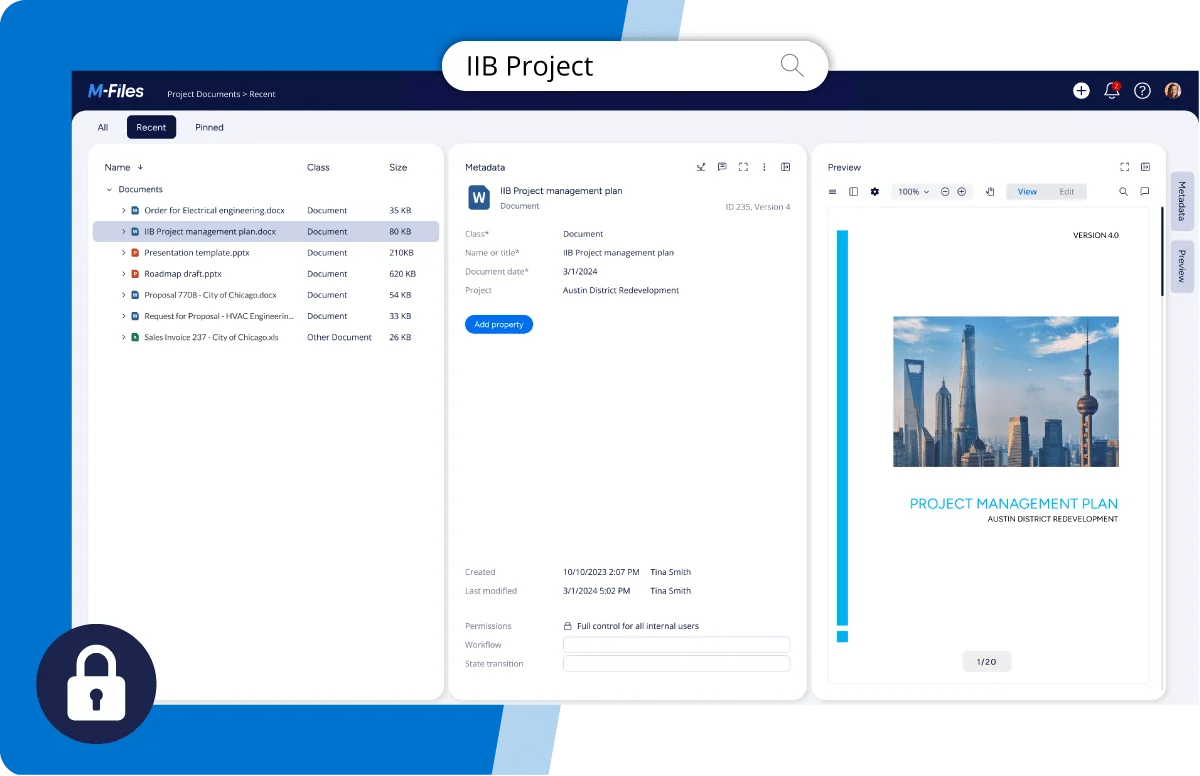
Access the Information You Need Instantly
From creation to disposal, see how M-Files provides a smarter way to manage documents, emails, and all your content.
The Risks of Poor Content Management
Enterprise risk management solutions require technologies that can protect organizations from several critical risks related to poor or inadequate management of documents and content.
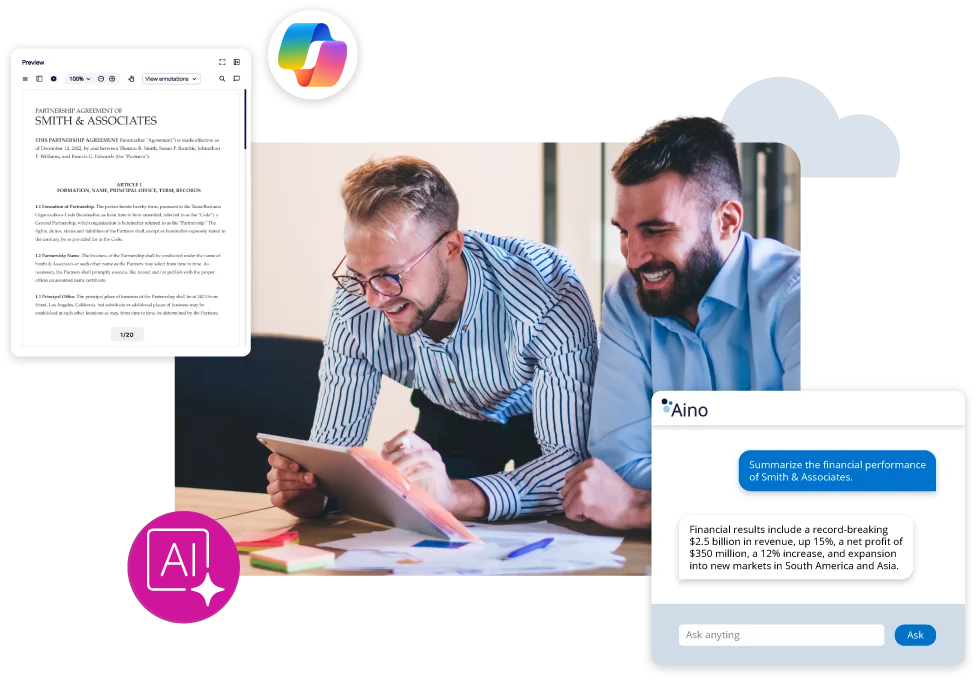
How M-Files Improves Enterprise Risk Management
M-Files addresses enterprise risk management concerns related to documents by providing a wealth of features.
Customizing the M-Files platform
M-Files can be easily customized to meet the needs of specific companies, use cases and enterprise risk management strategies.
The platform is highly configurable and can be easily customized to support specific business requirements. APIs enable M-Files to talk to other systems easily, ensuring that documents and data from existing systems will be available in M-Files. Solution templates and best practices for certain use cases enable companies to build information management solutions more quickly and easily. And third-party add-ins provide additional capabilities that extend the power of M-Files to solve enterprise risk management challenges.
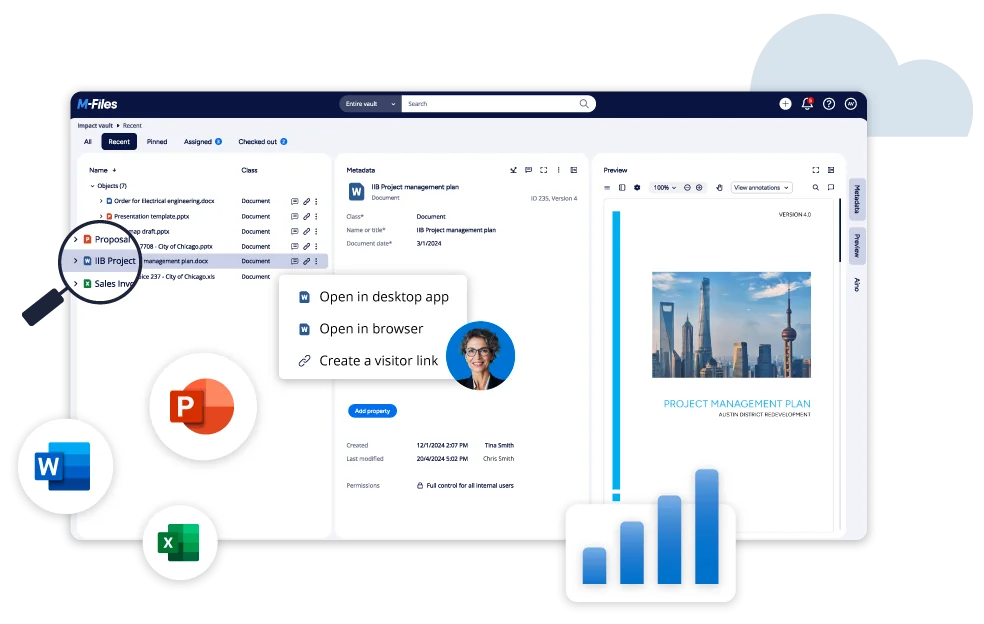
How M-Files Enables Efficiency for Your Business
Enhance Your Microsoft Copilot Experience
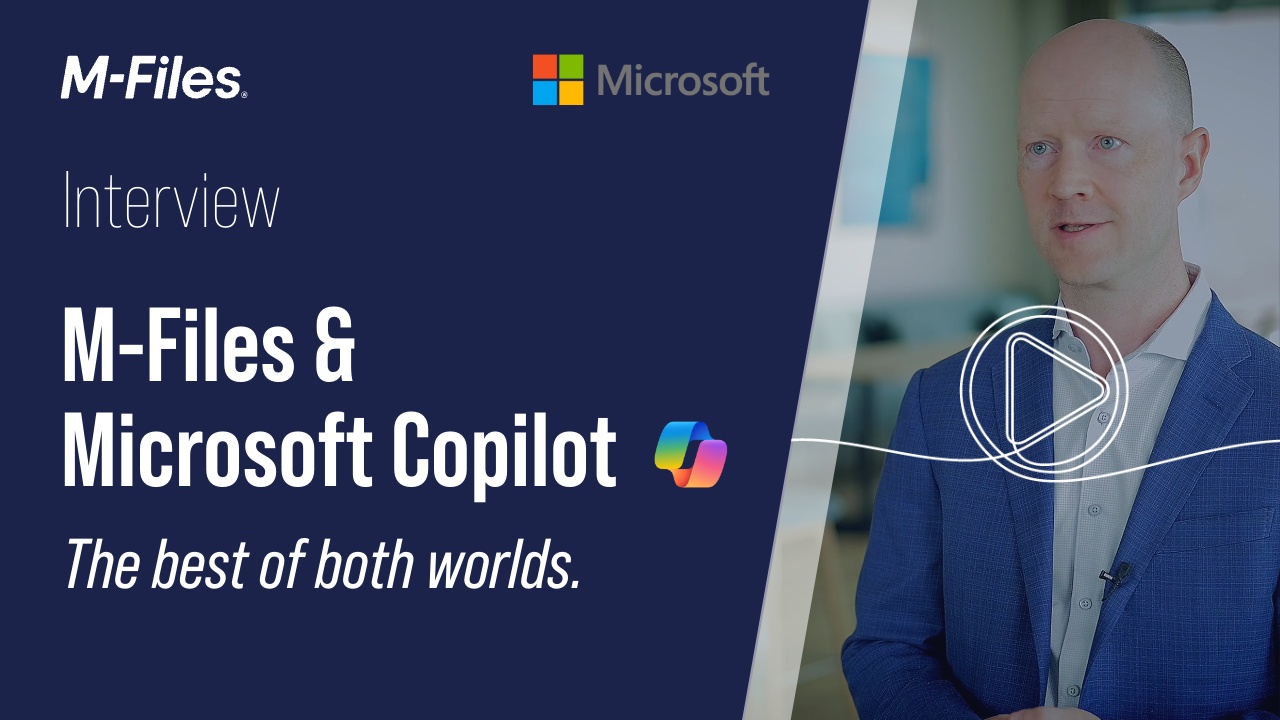

Why choose M-Files for enterprise risk management?
M-Files can be deployed in the cloud, on premises or as a hybrid solution that offers optimal flexibility and control. Thousands of organizations in more than 100 countries use M-Files to manage documents, information and processes more effectively.
Using artificial intelligence and machine learning, M-Files’ technology makes it possible to serve up the right information to the right people at the right moment, resulting in greater productivity, improved decision-making and better business outcomes.
M-Files integrates easily with an existing technology stack. Workers can even use their favorite tools such as Microsoft 365 or Google Workspace as the foundation from which they access documents via M-Files.
With M-Files, storing, securing, using and retaining documents becomes a much easier task that is far less prone to risk.





